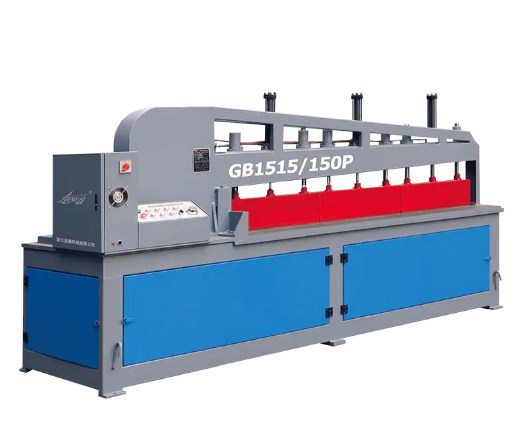The Semi Automatic Circular Saw Machine, a versatile and indispensable piece of equipment in the woodworking and metalworking industries, is distinguished by its ability to perform precise cuts with a degree of user intervention. Central to its operation is the control system, which governs the machine's functionality and ensures the accuracy and efficiency of the cutting process. This article aims to provide a comprehensive overview of the control systems found in Semi Automatic Circular Saw Machines, highlighting their importance and the various components that contribute to their operation.
At the heart of the Semi Automatic Circular Saw Machine's control system lies the user interface, which allows operators to input specific parameters for each cutting job. This interface is typically designed with ergonomics in mind, ensuring that the controls are easily accessible and intuitive to use. The interface may include digital displays, buttons, and dials that allow for the adjustment of cutting speed, depth, and angle, among other variables.
One of the key components of the control system is the motor, which powers the saw blade's rotation. The motor's speed and torque are carefully calibrated to match the specific requirements of the material being cut. In some Semi Automatic Circular Saw Machines, variable speed control is implemented, allowing the operator to adjust the blade's speed to achieve optimal cutting performance for different materials and thicknesses.
The control system also includes a range of safety features designed to protect the operator and the machine. These may include emergency stop buttons, blade guards, and overload protection to prevent damage to the motor in the event of excessive resistance during cutting. Additionally, some machines are equipped with sensors that monitor the blade's condition, alerting the operator to any potential issues such as excessive wear or damage.
Another critical aspect of the control system is the positioning mechanism, which ensures the accuracy of the cuts. This may involve a combination of manual adjustments and automated systems, such as digital readouts and laser guides, to help the operator align the material precisely before cutting. Some advanced Semi Automatic Circular Saw Machines also incorporate computer-aided design (CAD) and computer-aided manufacturing (CAM) software integration, allowing for the import of cutting patterns directly from a computer, streamlining the setup process, and reducing the potential for human error.
The control system of a Semi Automatic Circular Saw Machine also plays a crucial role in the machine's adaptability to different cutting tasks. With the ability to adjust various parameters, such as blade speed, feed rate, and cutting depth, the machine can be tailored to suit a wide range of materials and applications. This flexibility is a significant advantage for manufacturers who require a single machine capable of handling multiple cutting tasks with varying specifications.
In conclusion, the control system of a Semi Automatic Circular Saw Machine is a complex and sophisticated assembly of components that work in harmony to ensure the machine's efficient and precise operation. From the user interface to the motor, safety features, positioning mechanisms, and adaptability to various cutting tasks, the control system is the backbone of the machine's performance. Understanding the intricacies of these systems is essential for operators to maximize the capabilities of their Semi Automatic Circular Saw Machines and achieve the highest levels of productivity and quality in their cutting processes.



